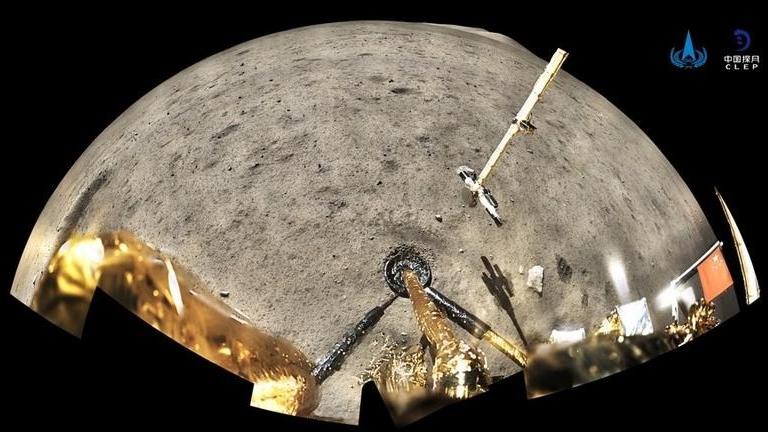 This image released by China National Space Administration on Dec 4, 2020 shows China's national flag unfurled from the Chang'e-5 probe on the moon. The image was taken by a panoramic camera installed on the lander-ascender combination of the probe, before the ascender blasted off from the moon with lunar samples. (CNSA / HANDOUT VIA XINHUA)
This image released by China National Space Administration on Dec 4, 2020 shows China's national flag unfurled from the Chang'e-5 probe on the moon. The image was taken by a panoramic camera installed on the lander-ascender combination of the probe, before the ascender blasted off from the moon with lunar samples. (CNSA / HANDOUT VIA XINHUA)
BEIJING - China has unveiled its lists of the top-10 scientific advances in China and the world for 2021, as selected by members of the Chinese Academy of Sciences and members of the Chinese Academy of Engineering.
Academicians from the CAS and CAE hold China's highest national academic titles in science and engineering.
Other advances include progress on long-term stays on China's space station, research into synthesizing starch from carbon dioxide, the lunar samples brought back by the Chang'e-5 mission
Among the scientific breakthroughs listed, China's progress on its first solar exploration task stands out.
The China National Space Administration released new images taken by the country's first Mars rover Zhurong, including the landing-site panorama, the Martian landscape and a selfie of the rover, signifying the complete success of China's first Mars exploration mission.
Other advances include progress on long-term stays on China's space station, research into synthesizing starch from carbon dioxide, the lunar samples brought back by the Chang'e-5 mission, the route to de novo domestication of wild allotetraploid rice, as well as the prevention and control of the agricultural pest Bemisia tabaci.
Topping the list of the world's top-10 scientific advances is the development of the first living robots with the ability to reproduce. The millimeter-sized living machines, called Xenobots 3.0, are neither traditional robots nor a species of animal, but living, programmable organisms.
ALSO READ: New hope offered to rare disease patients
Other notable advances include research on the accurate prediction of protein structures, a genetic engineering technique for genetic diseases, using human pluripotent stem cells to grow sesame-seed-sized heart models, and the recreation of the early structures of the human embryo from stem cells.
The selection of the top-10 scientific advances in China and the world has been hosted by the CAS and CAE on 28 occasions, playing a positive role in popularizing the latest sci-tech developments at home and abroad.


